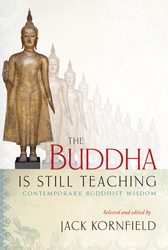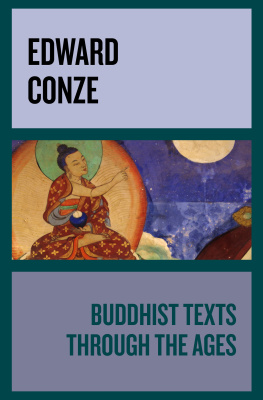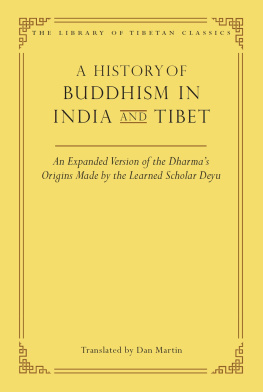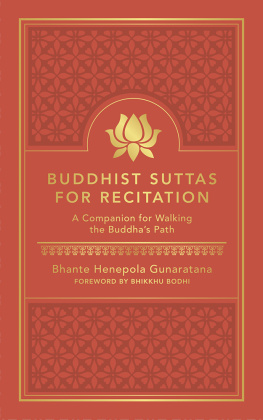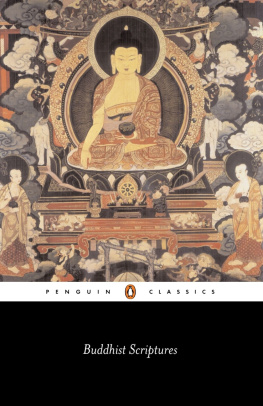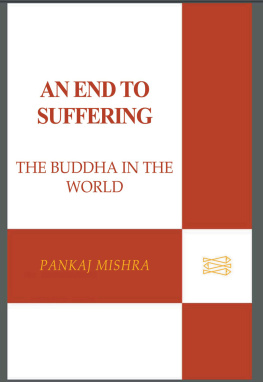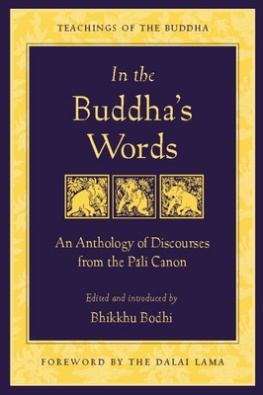In this masterful translation of Butons acclaimed History of Buddhism in India , one of the greatest of Tibets historical writings is finally brought to the contemporary reader with clarity, accuracy, and sheer elegance.
Thupten Jinpa, PhD, principal translator to H.H. the Dalai Lama and general editor of The Library of Tibetan Classics
For more than seventy-five years, students have relied on Eugene Obermillers pioneer translation of Butns history of Buddhism, but the antiquated and often obscure language and even the formatting presented a challenge. Butns text is a treasure trove, both for its information on the historical and mythological framework within which the Tibetans viewed the origins of the Buddhadharma and its treatment of basic terms and models for understanding the structure of the teachings. It is indeed a pleasure to read this modern version, which renders this valuable source so much more accessible. Lisa Stein and Ngawang Zangpo are to be congratulated on collaborating to produce this valuable contribution to the field of Buddhist studies.
Richard Barron (Chkyi Nyima)
ABOUT THE BOOK
This fourteenth-century Tibetan classic serves as an excellent introduction to basic Buddhism as practiced throughout India and Tibet and describes the process of entering the Buddhist path through study and reflection.
It begins with setting forth the structure of Buddhist education and the range of its subjects, and were treated to a rousing litany of the merits of such instruction. Were then introduced to the buddhas of our world and eonthree of whom have already lived, taught, and passed into transcendencebefore examining in detail the fourth, our own Buddha Shakyamuni. Butn tells the story of Shakyamunis past lives and then presents the path the Buddha followed (the same that all buddhas must follow). After the Buddhas story, Butn recounts three compilations of Buddhist scriptures and then quotes from sacred texts that foretell the lives and contributions of great Indian Buddhist masters, which he then relates, concluding with the tale of the eventual demise and disappearance of the Buddhist doctrine. The text ends with an account of the inception and spread of Buddhism in Tibet, focused mainly on the countrys kings and early adopters of the foreign faith. An afterword by Ngawang Zangpo, one of the translators, discusses and contextualizes Butns exemplary life, his turbulent times, and his prolific works.
Ngawang Zangpo (Hugh Leslie Thompson) completed two three-year retreats under the direction of the late Kalu Rinpoche. He is presently working on a number of translation projects under the direction of Chadral Rinpoche and Lama Tharchin Rinpoche. He has also contributed to Kalu Rinpoches translation groups books Myriad Worlds and Buddhist Ethics .
Sign up to receive inspirational Tibetan Dharma quotes and special offers from Shambhala Publications.

Or visit us online to sign up at shambhala.com/edharmaquotes.
T HE T SADRA F OUNDATION S ERIES
published by Snow Lion, an imprint of Shambhala Publications
Tsadra Foundation is a U.S.-based nonprofit organization that contributes to the ongoing development of wisdom and compassion in Western minds by advancing the combined study and practice of Tibetan Buddhism.
Taking its inspiration from the nineteenth-century nonsectarian Tibetan scholar and meditation master Jamgn Kongtrl Lodr Tay, Tsadra Foundation is named after his hermitage in eastern Tibet, Tsadra Rinchen Drak. The foundations various program areas reflect his values of excellence in both scholarship and contemplative practice, and the recognition of their mutual complementarity.
Tsadra Foundation envisions a flourishing community of Western contemplatives and scholar-practitioners who are fully trained in the traditions of Tibetan Buddhism. It is our conviction that, grounded in wisdom and compassion, these individuals will actively enrich the world through their openness and excellence.
This publication is a part of the Tsadra Foundations Translation Program, which aims to make authentic and authoritative texts from the Tibetan traditions available in English. The Foundation is honored to present the work of its fellows and grantees, individuals of confirmed contemplative and intellectual integrity; however, their views do not necessarily reflect those of the Foundation.
Tsadra Foundation is delighted to collaborate with Shambhala Publications in making these important texts available in the English language.
Butns History of Buddhism in India and Its Spread to Tibet

A Treasury of Priceless Scripture
Butn Rinchen Drup
TRANSLATED BY
Lisa Stein and Ngawang Zangpo
S NOW L ION
BOSTON & LONDON
2013
Snow Lion
An imprint of Shambhala Publications, Inc.
Horticultural Hall
300 Massachusetts Avenue
Boston, Massachusetts 02115
www.shambhala.com
2013 by Tsadra Foundation
Cover design: Rafael Ortet
All rights reserved. No part of this book may be reproduced in any form or by any means, electronic or mechanical, including photocopying, recording, or by any information storage and retrieval system, without permission in writing from the publisher.
Library of Congress Cataloging-in-Publication Data
Bu-ston Rin-chen-grub, 12901364.
[Bde bar gsegs pai bstan pai gsal byed chos kyi byun gnas gsun rab rin po chei mdzod ces bya ba. English]
Butns history of Buddhism in India and its spread to Tibet: a treasury of priceless scripture / Butn Rinchen Drup; translated by Lisa Stein and Ngawang Zangpo.
pages cm(The Tsadra Foundation series)
eISBN 978-0-8348-2952-7
ISBN 978-1-55939-413-0 (hardback)
1. BuddhismIndiaHistoryEarly works to 1800. 2. BuddhismTibet RegionHistoryEarly works to 1800. I. Stein, Lisa, 1969translator. II. Ngawang Zangpo, 1954translator. III. Title. IV. Title: Butns history of Buddhism in India and its spread to Tibet.
BQ262.B8313 2013
294.30954dc23
2012048997
C ONTENTS

Butns History of Buddhism in India and Its Spread to Tibet
BY L ISA S TEIN

I N 1994 I had the incredible good fortune to meet my teacher Lama Tharchin Rinpoche while a graduate student at what was then Naropa Institute (and is now Naropa University). Upon my graduation in 1996, I earnestly desired to focus on deepening my understanding and experience of Buddhism. Coincidentally, Lama Tharchin Rinpoche was to offer a month-long series of teachings and meditation retreats on the Big Island in Hawaii. The timing was perfect, so my now-husband, then-fianc, and I registered immediately. We then learned that Rinpoche agreed to perform our marriage ceremony as well. How perfect! We arrived at the remote center with our tent and sleeping bags, ready to dive in. Things started beautifully; we had a transformative first week of gentle instruction in what is called, Garab Dorjs Three Words That Hit the Point, ending with an empowerment into the practice of Guru Rinpoche in the form of Wealth God Daka and our beautiful, island-style wedding celebration. Lovely.
Then things started to get a little uncomfortable. About halfway through the next retreat, which was a wrathful practice and held in silence, Todd and I began feeling a bit overwhelmed and wondered whether we had bitten off more than we could comfortably chew. After some consideration, we spoke with Rinpoche privately and suggested that perhaps this would be a good place to end for now. We asked Rinpoche if he would give his permission for us to go, thinking that we would really enjoy spending that week on a beach somewhere, contemplating, letting the teachings sink in. Well... Rinpoche strolled with us among guava trees and gardens, listening as we shared our thoughts. When we finished, there was a short pause, then Rinpoche said something completely unexpected, Perhaps you should try something new, and stay.
Next page



